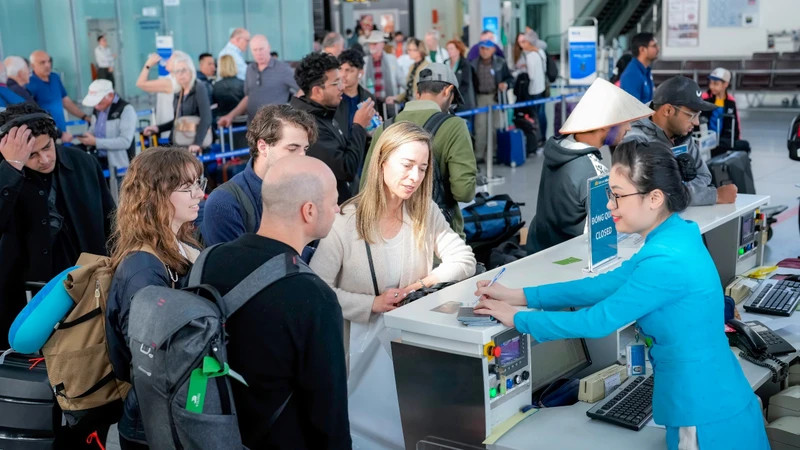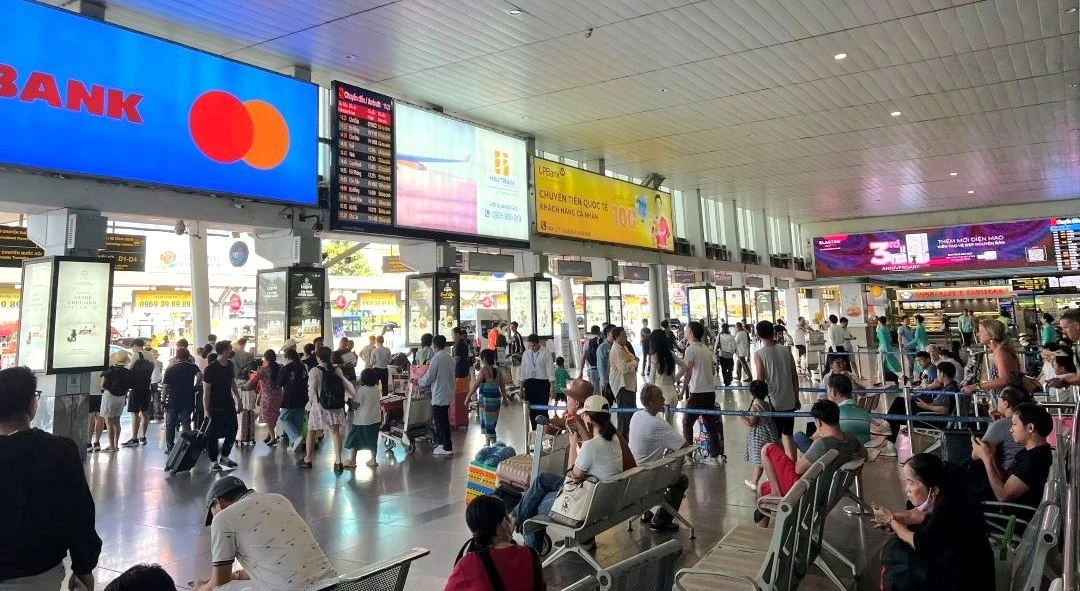This is a relatively positive result in the context that airlines face difficulties from high fuel prices, unfavourable exchange rate fluctuations, low seasonality in the second quarter and a shortage of aircraft due to the global engine recall by manufacturer Pratt & Whitney.
Impressive results
The Civil Aviation Authority of Vietnam said that since the beginning of the year, aviation fuel prices have remained high, averaging 102.14 USD/barrel, up 30.3% compared to 2019, causing huge airline costs. For example, Vietnam Airlines' costs increased by nearly 2,500 billion VND.
In addition, the VND/USD exchange rate at 24,856 VND, up 7% compared to 2019, has caused airlines' costs to increase in the past six months, and the sharp decline in the Japanese yen has also caused hundreds of billions of VND in revenue losses for airlines in this key market.
In addition, the severe shortage of aircraft has also had a major impact on airline revenue and profits. Before the pandemic, the Vietnamese aviation industry had 230 aircraft, but now there are only 160 aircraft, a 32% decrease in resources due to the impact of the disruption of the global supply chain. The shortage of aircraft increased aircraft rental prices, maintenance costs, aircraft spare parts, and the extended time aircraft are grounded, causing revenue losses.
However, airlines have taken advantage of the growth momentum of the international market to quickly recover and develop. For Vietnam Airlines, the international market in the first six months of the year reached nearly 20 million passengers, an increase of 42% over the same period in 2023, recovering to almost the same level as before the COVID-19 pandemic. Vietnam Airlines' domestic market, increased night flights and implemented aviation-tourism linkage incentives to strongly stimulate domestic tourism demand.
According to the financial report, for the first half of the year, Vietnam Airlines achieved a consolidated revenue of more than VND 53,126 billion, an increase of 20% over the same period in 2023. Consolidated profit before tax was more than VND 5,674 billion, net profit from business activities was nearly VND 1,143 billion and other profits were more than VND 4,531 billion.
According to the airline's leaders, this profit was greatly contributed by debt forgiveness from Pacific Airlines' partners. In terms of operating results, the airline transported nearly 11.5 million passengers and 143 thousand tonnes of parcel cargo, up 10% and 42.1% respectively over the same period in 2023.
The leader of Vietjet Air said that in the first six months of 2024, the airline returned to higher operating levels than in 2019, the peak period before the COVID-19 pandemic. In the first half of 2024, the airline transported 13.1 million passengers and operated 70,154 safe flights.
Vietjet contributed nearly VND 3,700 billion in direct and indirect taxes and fees to the budget in the first six months. In the first six months, the airline's air transport revenue reached VND 32,893 billion, up 31% year-on-year, and pre-tax profit reached VND 1,174 billion, up 690% year-on-year.
Regarding consolidated business results, in the first six months of the year, Vietjet achieved revenue of more than VND 34 trillion and pre-tax profit of VND 1,311 billion, up 15% and 433% year-on-year, respectively, exceeding the annual plan by 21%.
“As of June 30, Vietjet’s total assets reached more than VND 91,755 billion, the debt/equity ratio was only two times (compared to the normal level in the world of 5 times), and cash and cash equivalents at the end of the second quarter reached more than VND 4,100 billion”, said a representative of Vietjet.
According to the update of the independent credit rating agency Saigon Ratings, Vietjet has maintained its long-term credit rating of vnBBB- with a “Stable” outlook. The airline is assessed to have a clear recovery, with the proactive preparation of important conditions and premises in 2022 and 2023, Vietjet can develop faster and more sustainably in the medium and long term.
Many international routes open
The year 2024 marks the comprehensive development milestone of Vietjet Air with a wide-ranging mid-range international flight network, ready to meet domestic transportation needs and continue to expand the international flight network further. Vietjet Air operates 149 routes across Vietnam and internationally, including 38 domestic and 111 international routes.
Since the beginning of the year, the airline has opened a route connecting Ho Chi Minh City with Xi'an, the capital of Shaanxi Province (China), launched a route from Phu Quoc to Taichung and Kaohsiung (Taiwan, China), and launched a route from Ho Chi Minh City to Vientiane (Laos).
The airline also announced a route from Nha Trang to Daegu (the Republic of Korea), expected to operate in October, becoming the airline with the most routes between Vietnam and the RoK, marking the 10-year journey connecting Vietnam and the RoK, carrying 10 million passengers on more than 37 routes between the two countries.
For the Asia-Australia transcontinental route, Vietjet launched two routes from Hanoi to Melbourne and Sydney, increasing the number of routes between Vietnam and Australia to 7. Along with five routes from Ho Chi Minh City to the five largest cities in Australia, Vietjet operates the most routes between Vietnam and Australia with 58 flights per week.
Operating a fleet of more than 105 aircraft (including Vietjet Thailand), the number of passengers transported has been growing continuously every year, Vietjet is actively expanding its flight network in the skies of the continents, developing a new, modern, and environmentally friendly fleet.
Vietnam Airlines also opened new international routes to Manila (Philippines), and Chengdu (China) and upgraded wide-body aircraft on routes to India, China, Singapore, etc.
Not only ensuring business efficiency, Vietnam Airlines continues to promote the role of the national airline connecting Vietnam with the world and between regions across the country, thereby contributing to promoting the country's socio-economic development.
The leaders of the Civil Aviation Authority of Vietnam commented that by bringing the image of Vietnam to the world through promotional activities and promoting aviation and tourism, airlines have actively contributed to enhancing the image and position of the country and Vietnamese people in the international arena.
In the last six months of the year, in addition to some favourable factors such as the recovery of the international market, the aviation business environment will still have to face problems, such as high fuel prices, unfavourable exchange rate fluctuations, sharp increases in aircraft rental prices and declining domestic aircraft resources.
In addition, new developments may appear, such as election results in some countries affecting world relations and development, widespread conflicts in Europe and the Middle East, and rapidly increasing competition in the international market as international airlines increase operations in Vietnam.
“To overcome difficulties and achieve goals, airlines must continue to improve service quality, focus on effectively implementing operations, prepare resources for the future and maintain safety in operations. At the same time, focus on management and cost control in all areas, as well as have plans to build and control cash flow plans,” the leader of the Civil Aviation Authority of Vietnam noted.
















